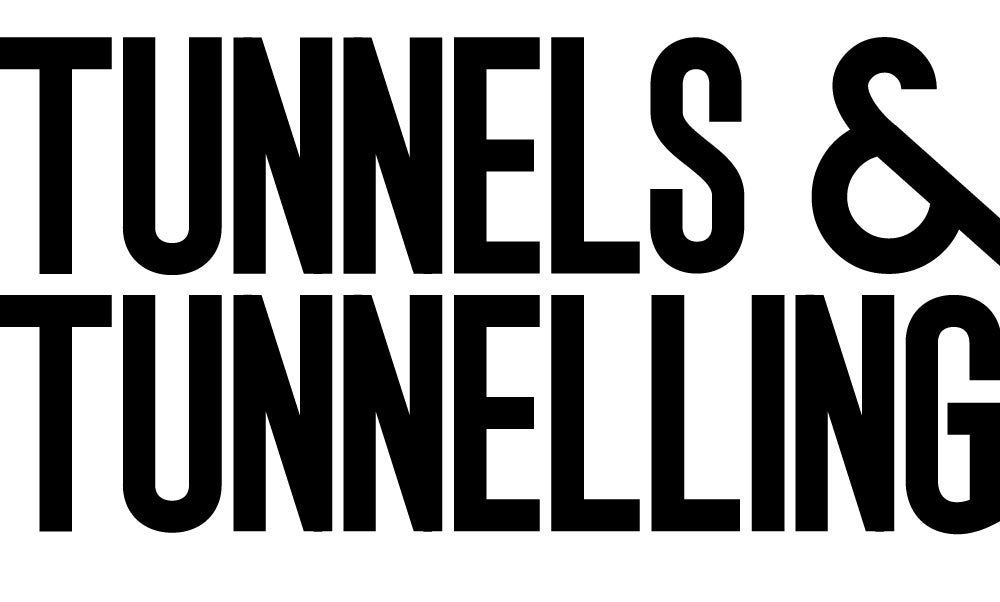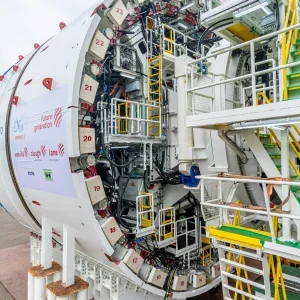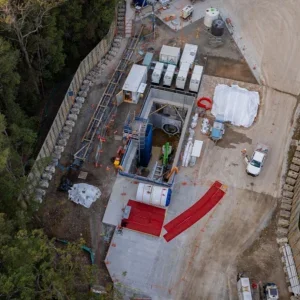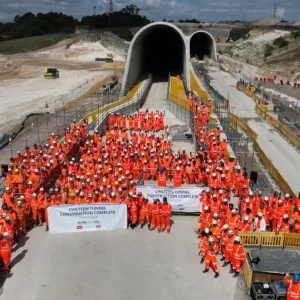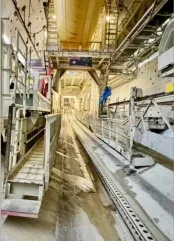
The 200m-long TBM Kirsten (TBM 1) is travelling upwards to complete the shaft which will connect the underground power station to the headrace tunnel.
Future Generation JV deputy TBM construction manager Varun Tyagi said there were various challenges and innovations involved with tunnelling the inclined pressure shaft.
“First of all, we are excavating the slope itself, second is the segmental lining, third is the grouting operations, fourth is using MSVs with the rack and pinion system, and fifth is the monorail on that slope, for transporting people,” he said.
The Force Activated Coupling System (FACS) segments – said to be a world first – have been specially designed to withstand the extreme water pressure when the powerhouse is operating.
Tyagi said that for every two metres TBM Kirsten advanced, there were changes in conditions. Working in such a unique environment heightened safety concerns, he added.
“Working onboard a TBM itself is a challenge to maintain pace while monitoring the parameters for the excavation. We are also continuously extending the services at the back of the TBM as it advances as well as extending the rack and pinion system, monorail system, service pipes, and ventilation,” he said.
Last month the final segment[https://www.tunnelsandtunnelling.com/news/final-segment-cast-for-snowy-2-0-inclined-pressure-shaft/] was cast for the inclined pressure shaft. In June, the fourth TBM for the project passed[https://www.tunnelsandtunnelling.com/news/snowy-2-0s-fourth-tbm-passes-fat/] its Factory Acceptance Test.
Australia’s Snowy 2.0 will link two existing dams, Tantangara and Talbingo, through 27km of tunnels and a new underground power station.
Water will be pumped to the upper dam when there is surplus renewable energy production and the demand for energy is low, and then released back to the lower dam to generate energy when electricity demand is high.
